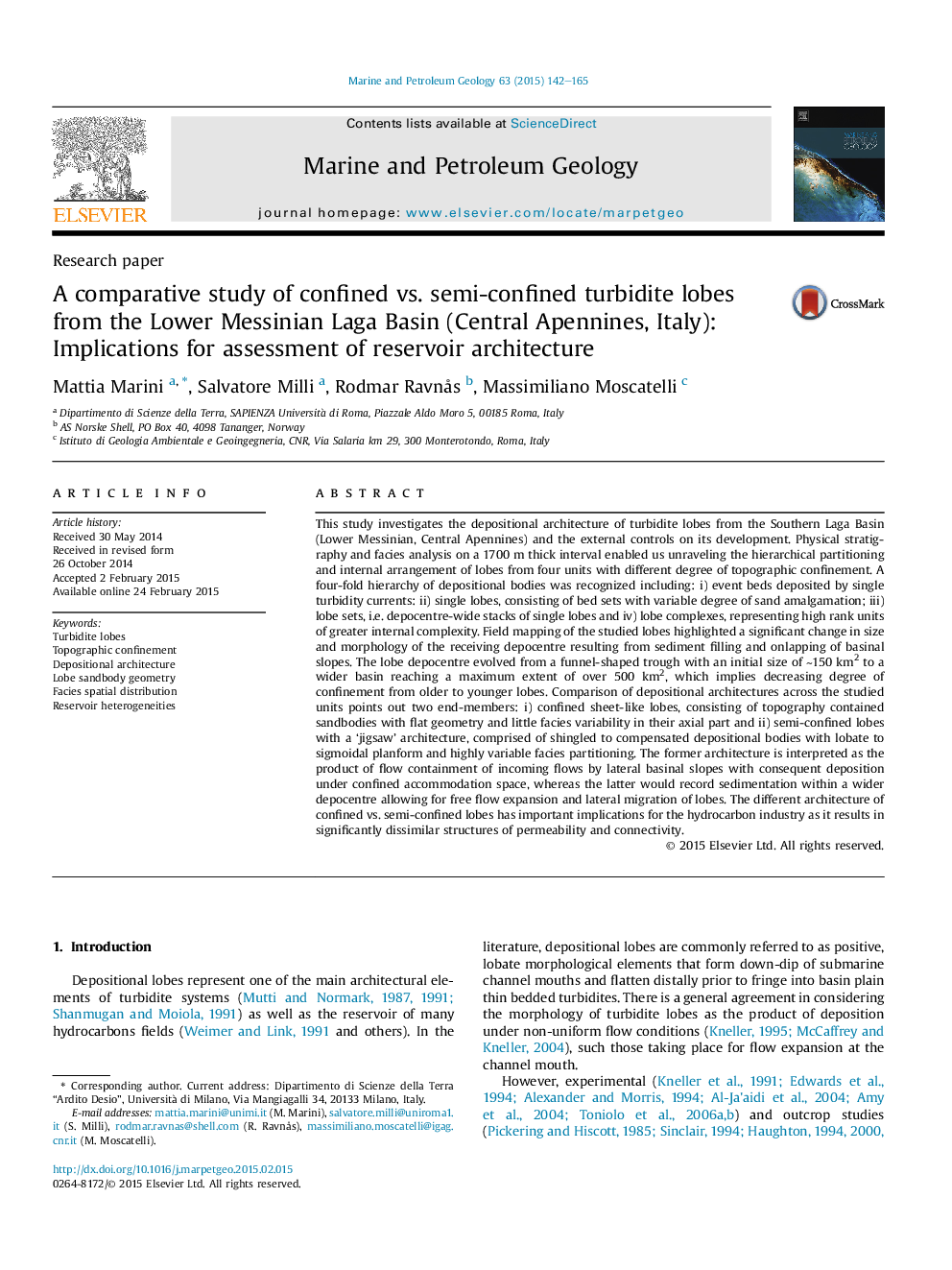| کد مقاله | کد نشریه | سال انتشار | مقاله انگلیسی | نسخه تمام متن |
|---|---|---|---|---|
| 6435204 | 1637162 | 2015 | 24 صفحه PDF | دانلود رایگان |
- We detail sedimentary facies and depositional geometries of turbidite lobes.
- We describe and interpret the hierarchical partitioning of turbidite lobes.
- We attempt a quantitative description of depositional geometries.
- We assess degree of confinement through reconstruction of the receiving topography.
- We assess the control of confinement on lobe depositional architecture.
This study investigates the depositional architecture of turbidite lobes from the Southern Laga Basin (Lower Messinian, Central Apennines) and the external controls on its development. Physical stratigraphy and facies analysis on a 1700Â m thick interval enabled us unraveling the hierarchical partitioning and internal arrangement of lobes from four units with different degree of topographic confinement. A four-fold hierarchy of depositional bodies was recognized including: i) event beds deposited by single turbidity currents: ii) single lobes, consisting of bed sets with variable degree of sand amalgamation; iii) lobe sets, i.e. depocentre-wide stacks of single lobes and iv) lobe complexes, representing high rank units of greater internal complexity. Field mapping of the studied lobes highlighted a significant change in size and morphology of the receiving depocentre resulting from sediment filling and onlapping of basinal slopes. The lobe depocentre evolved from a funnel-shaped trough with an initial size of â¼150Â km2 to a wider basin reaching a maximum extent of over 500Â km2, which implies decreasing degree of confinement from older to younger lobes. Comparison of depositional architectures across the studied units points out two end-members: i) confined sheet-like lobes, consisting of topography contained sandbodies with flat geometry and little facies variability in their axial part and ii) semi-confined lobes with a 'jigsaw' architecture, comprised of shingled to compensated depositional bodies with lobate to sigmoidal planform and highly variable facies partitioning. The former architecture is interpreted as the product of flow containment of incoming flows by lateral basinal slopes with consequent deposition under confined accommodation space, whereas the latter would record sedimentation within a wider depocentre allowing for free flow expansion and lateral migration of lobes. The different architecture of confined vs. semi-confined lobes has important implications for the hydrocarbon industry as it results in significantly dissimilar structures of permeability and connectivity.
Journal: Marine and Petroleum Geology - Volume 63, May 2015, Pages 142-165
